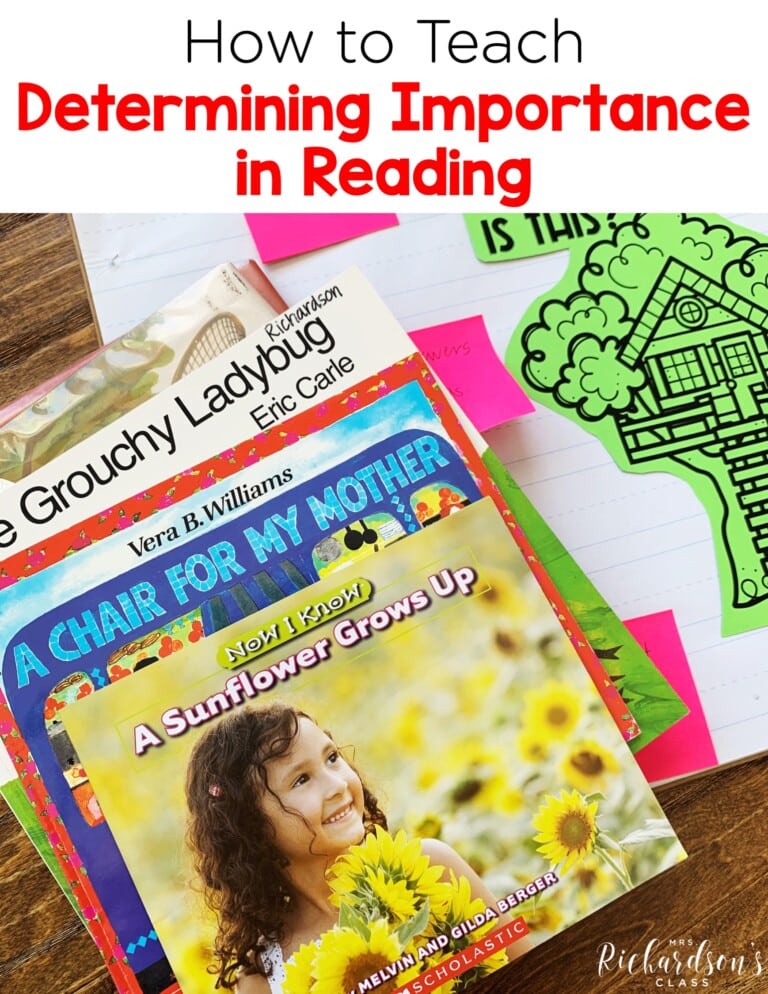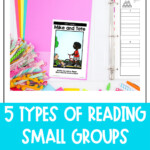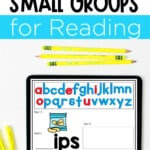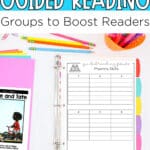


When you teach kindergarten, first, and second grade, you have such a variety of readers in your classroom. Some can read on an advanced fourth grade level. Some students are nonreaders. Many students fall in between and need help with phonological awareness and phonics skills. When it comes to creating reading small groups, where do you begin? How can you group students together to meet everyone’s needs? You can do this by moving beyond just leveled groups and using several different types of guided reading groups.
Yes, friends…you can group students together in several different ways to differentiate your instruction and meet readers where they are. You don’t have to just use leveled guided reading groups (although there are benefits to these types of groups, too!). Let’s jump into how to get started forming your groups and what they may look like.
Before creating guided groups, the first step is to assess your students. While assessing for a student’s reading level is important, it’s more important to get a bigger picture of each reader that goes beyond the reading level.
By completing several different reading assessments for kindergarten and first grade readers, you’ll get a bigger picture of what each reader is capable of as a whole. Then, results can guide your instruction to differentiate for the learners in your classroom. Additionally, you will have more opportunities to track progress in specific areas. You can see which areas students need more practice and review with.
Here are the areas of reading to collect data in to find the strengths and weaknesses of each reader:
I have an entire blog post that guides you through four types of reading assessments to help you learn where all of your students are. It also has a FREE Reading Assessment Toolkit where you can get lots of assessments all in one place!
After you assess your students, you’ll be able to create guided reading groups based on the needs of your students and the gaps in their reading.
Students who need to build stronger phonological awareness may be grouped together to provide targeted instruction and practice. These students may need to work on beginning, ending, and medial sounds. They may also need more work with blending, deleting, and segmenting phonemes.
In this type of guided reading group, you’ll want to have explicit teaching and hands-on, interactive activities. You’ll also want to actively monitor students to track their progress.
Another one of the types of guided reading groups is a phonics group. If students need more instruction and practice with specific phonics skills (either in isolation or in context), a phonics small group would provide that.
Students in phonics groups may need to practice things like short vowel words (CVC) and long vowel words (CVCe). They could also work with words with blends, digraphs, diphthongs, and r-controlled vowels.
In phonics-focused guided reading groups, you’ll also want to have explicit teaching and interactive activities. You’ll use a variety of letter manipulatives to do activities like elkonin boxes, word building, and word ladders. I have more about integrating phonics and guided reading HERE!
One benefit of guided reading groups using decodable books is that you can also practice phonological awareness and phonics skills within this group. It is possible to blend these groups when necessary. You’ll want to follow a specific and intentional phonics sequence as well.
Decodable books also allow for fluency practice and decoding practice. Guided reading groups that use decodable readers are perfect for beginning readers in kindergarten!
Guided reading levels are simply a system developed to help organize reading skills and strategies so that readers are not overwhelmed. The goal of guided reading is to work within a child’s instructional level. Anything above that can cause frustration for the reader and anything below does not allow for enough teachable moments.
Books are assigned reading levels and as children are assessed, children are given leveled books to work within that do not overwhelm them. The goal is that they have a useful tool that allows the teacher to come alongside them and coach them through.
Within the leveled guided reading groups, you can create two different types of guided reading groups: leveled guided reading groups and strategy-based guided reading groups. There are benefits to both of these types of guided reading groups.
Leveled books allow students to learn more about concepts about print and to enrich their vocabulary. They also allow students to develop deeper comprehension skills as the text gets more complex.
If you have students who need to work on a specific reading strategy or comprehension skills, you can create a guided reading group that specifically practices those skills. For example, if you have two students on a level E and two students on a level F who all need to work on retelling, you can group them together. Use a level D or E text for the group and provide explicit teaching on retelling with opportunities for practice.
If you want some help getting guided reading groups up and running, or just want to refine your teaching and activities, I have two different solutions for you.
First, I have Decodable Readers Kits that have everything you need to use decodable readers to help students with phonics skills and decoding skills. There are four different types of kits:
Each kit has everything you need to successfully teach including decodable books, detailed lesson plans, phonics practice materials, teaching posters, and more. You can get each set individually or grab the bundle to save.
Next, I have leveled guided reading kits for Kindergarten (Levels A-D), First Grade (Levels E-J), and Second Grade (Levels K-M). These kits also have everything you’ll need for guided reading lessons like books (printable and digital), scripted lessons, word work activities, teaching posters, parent involvement notes, and more.
Trying new things can be hard, but you can do it! When start using multiple types of guided reading groups, you’re going to see a big impact on your readers’ progress. Give it a try and let me know how it goes!

Want to use the latest research to boost your readers during small groups? This FREE guide is packed with engaging ideas to help them grow!

I’m a K-1 teacher who is passionate about making lessons your students love and that are easy to implement for teachers. Helping teachers like you navigate their way through their literacy block brings me great joy. I am a lifelong learner who loves staying on top of current literacy learning and practices. Here, you’ll find the tools you need to move your K-2 students forward!


| Cookie | Duration | Description |
|---|---|---|
| cookielawinfo-checkbox-analytics | 11 months | This cookie is set by GDPR Cookie Consent plugin. The cookie is used to store the user consent for the cookies in the category "Analytics". |
| cookielawinfo-checkbox-functional | 11 months | The cookie is set by GDPR cookie consent to record the user consent for the cookies in the category "Functional". |
| cookielawinfo-checkbox-necessary | 11 months | This cookie is set by GDPR Cookie Consent plugin. The cookies is used to store the user consent for the cookies in the category "Necessary". |
| cookielawinfo-checkbox-others | 11 months | This cookie is set by GDPR Cookie Consent plugin. The cookie is used to store the user consent for the cookies in the category "Other. |
| cookielawinfo-checkbox-performance | 11 months | This cookie is set by GDPR Cookie Consent plugin. The cookie is used to store the user consent for the cookies in the category "Performance". |
| viewed_cookie_policy | 11 months | The cookie is set by the GDPR Cookie Consent plugin and is used to store whether or not user has consented to the use of cookies. It does not store any personal data. |


